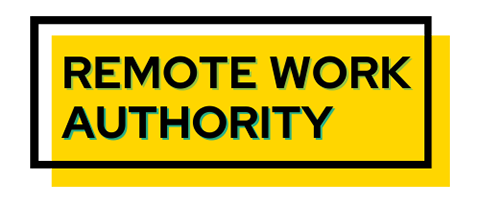As a hiring manager, you make or break your company’s success. Unconscious bias in the hiring process makes teams less diverse and less productive. You need a structured hiring process that expels implicit bias from the equation to attract and hire the best employees. Even if you don’t think you have biases, research indicates you probably do.
It’s something you might believe you don’t do, would never do, or feel is morally wrong, but it happens every day. We make quick judgments about a person, place, or thing based on our past experiences, stories we have heard, or other unconscious internal biases.
Becoming aware of the possibility of unconscious bias and adjusting your hiring process can help diversify your team and ensure you hire quality candidates.
Aside from fairness, diverse teams have increased productivity, performance, and revenue.
Does Everyone Have Unconscious Biases?
The most significant study that studied bias was conducted in 1998 by University of Washington psychologists. It showed that an incredible 90 to 95% of people have “roots of unconscious prejudice.”

As a hiring manager, you might have a “gut feeling” about someone, but you’re not sure why. As much as you may not want to admit or accept it, this is likely unconscious bias. Perhaps they remind you of someone, you could see yourselves being friends, they went to the same college as you, or they made a good first impression.
If you are unaware of any unconscious biases you may have, take this test to contribute to research and consider your results.
Conscious vs. Unconscious Bias in the Hiring Process
Unconscious bias, also called implicit bias, is something that seeps into your brain without you realizing it. People are not aware of these biases, but they may come to light when making decisions or choices. Implicit biases can become explicit biases over time. As they creep into your consciousness, you are faced with the decision to embrace or change these ideas.
Conscious bias, also called explicit bias, is obvious and felt with intent. People use these biases without shame when making decisions and choices. It may cause us to be rude or exclude a specific group of people.
How Does Unconscious Bias Develop?
It’s inevitable. Since birth, we have been learning and observing. Our brains are wired to make associations through experiences and sights as they make quick judgments and recognize patterns.
It’s important to note that these implicit biases don’t hardwire you to discriminate, judge, or treat people poorly. It’s simply how your brain has managed to generalize things in this complicated world.
7 Common Unconscious Biases to Be Aware of When Interviewing Candidates
- Affinity Bias – An affinity bias is favoring people who remind you of yourself. People who have had similar experiences, look similar, or who have similar interests to you.
- First Impression Bias – In as little as seven seconds, the candidate has already made a first impression on you. Your brain fills in the blanks and makes assumptions about them based on this quick, initial meeting. 25.5% of hiring managers make their decision within the first five minutes of the interview process.
- Beauty Bias – Many people don’t like to admit it, but favoring more attractive people is real. Attractive people are two times more likely to get hired when compared with an “unattractive” person. The beauty bias also goes along with the implicit idea of good-looking blondes being incompetent.
- Halo and Horns Bias – The halo bias is when you, as a hiring manager, zero in on one great aspect of the employee’s resume. Because you’re so wrapped up and excited about this information, it’s easier to overlook the less desirable points. The horns bias is the opposite. You see one thing you heavily dislike or disagree with (think a rival university or company), making it difficult to see the resume’s good aspects.
- Confirmation Bias – The confirmation bias is tricky. Before meeting a person, you may have already made a decision about them by reading their resume. Therefore, you ask tailored interview questions (that may be irrelevant) to confirm your preconceived beliefs, whether they’re good, bad, true, or false.
- Status Quo Bias – Also called the conformity bias, this is when you hire people that are similar to your current team. Hiring people who get along is great, but having diverse people and ideas in the workplace leads to higher-performing teams.
- Non-Verbal Bias – This bias is based purely on how a person looks or presents themselves. You can think positively or negatively about someone based on their smile, handshake, body language, gestures, and personal style.
Other significant biases include height, name, gender, sexuality, religion, race, and education.

How to Prevent Unconscious Bias in the Hiring Process
1. Rewrite job descriptions
Many job listings use words that are generally geared towards one gender or the other. Words such as aggressive, outspoken, assertive, and dominant may not appeal to women. Instead, use words like reliable, results-driven, interpersonal, and committed.
If you don’t find any of these adjectives neutral, do your best to use an equal amount of “masculine” and “feminine” adjectives. Ensure the title of the position is also gender-neutral. For example, chairperson instead of chairman. Also, avoid using playful words like ninja, superstar, or rockstar. These may deter highly-qualified middle-aged employees from applying.
Keep the description short and precise.
2. Ask the candidate to complete a work exercise before filling out an application
A skill test is one of the most effective ways to start the hiring process. Take it a step further and have the names of the applicants confidential as you and your team look over the results. This method allows you to fully focus on an applicant’s problem-solving, understanding, and skill set that is necessary for the specific position. It’s an ideal way to seed out applicants.
3. Use software that blinds resumes
Software like Blendoor, Toggl Hire, and Pymetrics provide skill tests and blur applicant’s names, ages, locations, criminal history, and educational backgrounds (for the first round, at least) so that you can have a pool of talented applicants without worrying about implicit or explicit biases.
4. Have structured interviews
Interviewing managers should have a set of questions that they ask each employee. Unless it’s relevant to the job or experience, they should do their best to not get sidetracked. This ensures that each interview is equal and fair. Interviewers could take it a step further by creating a scorecard for each question and rating the applicant’s answer with a number.
5. Recognize common biases
To avoid biases, you must recognize them, accept them, and learn how to minimize them. Diversity, equity, and inclusion training is a great tool for CEOs, HR, managers, team leaders, and even employees. I also recommend checking out the book We Can’t Talk About That At Work! by Mary-Frances Winters.


